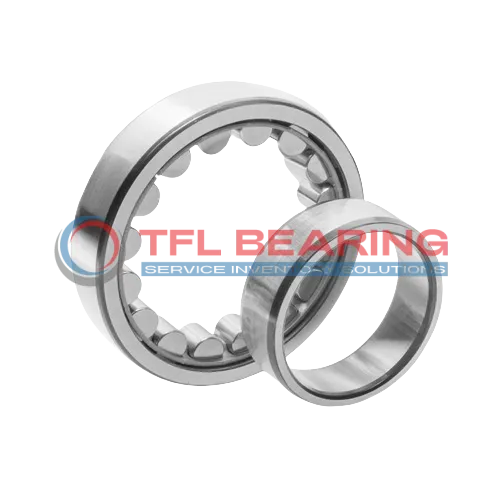
The NU 315 ECJ is a single-row cylindrical roller bearing with a 75mm bore and 160mm outer diameter, crafted from durable chrome steel. It handles combined loads up to 63000 lbf and operates smoothly at speeds up to 5000 RPM.
Its open design allows for easy lubrication with grease or oil, while the steel cage ensures stable performance. The bearing works efficiently in temperatures ranging from -30°C to 110°C.
This model is interchangeable with SKF bearings, making it a practical choice for replacements. Ideal for heavy-duty applications like industrial machinery or gearboxes where radial and axial loads are present.
Weighing 3.24kg, it offers a robust build for demanding environments. Compliant with RoHS and REACH standards for safe and reliable use.
"*" indicates required fields
Performance Features of NU 315 ECJ Bearing
NU 315 ECJ Bearing is built with chrome steel rings and rollers, offering strong resistance to combined loads.
Its dynamic radial load capacity reaches 63000 lbf, ensuring reliable performance in demanding conditions.
The steel cage keeps the rollers centred, reducing wear and extending service life.
With a maximum speed of 5000 rpm, it balances durability and efficiency.
Industrial Uses of NU 315 ECJ Bearing
NU 315 ECJ Bearing is commonly used in heavy machinery like gearboxes and industrial pumps, where its cylindrical roller design handles high radial loads efficiently. The open seal type allows for easy lubrication, extending its service life in demanding conditions.
In automotive applications, NU 315 ECJ Bearing supports components such as transmissions and differentials, ensuring smooth operation under combined loads. Its metric sizing makes it a versatile choice for various vehicle designs.
For automation systems, NU 315 ECJ Bearing’s steel cage and chrome steel construction provide reliable performance in robotic arms and conveyor belts. The high dynamic radial load capacity ensures durability in continuous operation.
NU 315 ECJ Bearing is also suitable for wind turbines, where its ability to handle axial displacement and high speeds is crucial. The temperature range of -30° to 110°C makes it adaptable to diverse environmental conditions.
"*" indicates required fields